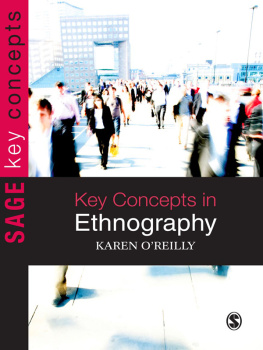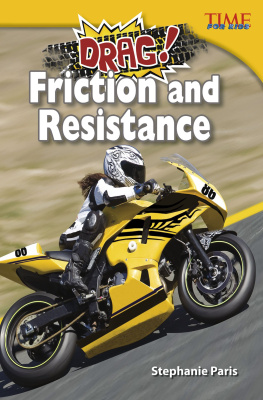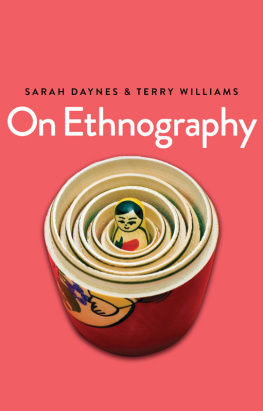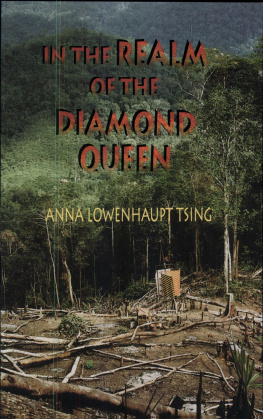Tsing - Friction: an ethnography of global connection
Here you can read online Tsing - Friction: an ethnography of global connection full text of the book (entire story) in english for free. Download pdf and epub, get meaning, cover and reviews about this ebook. City: Indonesië, year: 2015;2011, publisher: Princeton University Press, genre: Politics. Description of the work, (preface) as well as reviews are available. Best literature library LitArk.com created for fans of good reading and offers a wide selection of genres:
Romance novel
Science fiction
Adventure
Detective
Science
History
Home and family
Prose
Art
Politics
Computer
Non-fiction
Religion
Business
Children
Humor
Choose a favorite category and find really read worthwhile books. Enjoy immersion in the world of imagination, feel the emotions of the characters or learn something new for yourself, make an fascinating discovery.

- Book:Friction: an ethnography of global connection
- Author:
- Publisher:Princeton University Press
- Genre:
- Year:2015;2011
- City:Indonesië
- Rating:4 / 5
- Favourites:Add to favourites
- Your mark:
- 80
- 1
- 2
- 3
- 4
- 5
Friction: an ethnography of global connection: summary, description and annotation
We offer to read an annotation, description, summary or preface (depends on what the author of the book "Friction: an ethnography of global connection" wrote himself). If you haven't found the necessary information about the book — write in the comments, we will try to find it.
Tsing: author's other books
Who wrote Friction: an ethnography of global connection? Find out the surname, the name of the author of the book and a list of all author's works by series.
Friction: an ethnography of global connection — read online for free the complete book (whole text) full work
Below is the text of the book, divided by pages. System saving the place of the last page read, allows you to conveniently read the book "Friction: an ethnography of global connection" online for free, without having to search again every time where you left off. Put a bookmark, and you can go to the page where you finished reading at any time.
Font size:
Interval:
Bookmark:
........
........
Global Connection
Princeton and Oxford
Copyright 2005 by Princeton University Press
Published by Princeton University Press,
41 William Street, Princeton, New Jersey 08540
In the United Kingdom: Princeton University Press,
3 Market Place, Woodstock, Oxfordshire OX20 1SY
All Rights Reserved
Library of Congress Cataloging-in-Publication Data
Tsing, Anna Lowenhaupt.
Friction : an ethnography of global connection /
Anna Lowenhaupt Tsing.
p. cm.
Includes bibliographical references and index.
ISBN 0-691-12064-1 (alk. paper)
ISBN 0-691-12065-X (pbk. : alk. paper)
1. Intercultural communication. 2. International economic relations. 3. International relations. 4. Ethnology. 5. Globalization. I. Title.
GN345.6.T75 2005
303.482dc22 2004043422
British Library Cataloging-in-Publication Data is available
This book has been composed in Janson and Frutiger
Printed on acid-free paper.
pup.princeton.edu
Printed in the United States of America
10 9 8 7 6 5 4 3 2 1
..........
..........
From the perspective of many foreigners, Indonesia in the last thirty years of the twentieth century was a bustling yet quiet place, known for its beaches and its business opportunities. Thensuddenlyaround the turn of the century, the country appeared to fall apart. Stories of financial crisis, political scandal, ethnic and religious conflict, and resource struggle filled the news. Even a slightly closer look, however, reveals that these outbreaks of unrest and disaster built directly on the policies and practices of the preceding thirty years of imagined peace and progress. Consider the terrain of Indonesias famous rainforests and indigenous cultures. The New Order regime of General Suharto (19661998) made business a predator, born from the mix of nepotism, international finance, and military muscle, and feeding on cheap resources ripped illegally from rural communities. No wonder that after Suhartos resignation in 1998, villagers grew bold enough to assert their local rights. And, given the violence that had accompanied corporate expropriations, no wonder too that local complaints of all sorts entered a dangerous melee. Community groups fought and merged with illegal loggers, corporate security guards, gangsters, advocacy groups, religious factions, district officials, police, and army men.
This book describes the cultural processes in which certain kinds of predatory business practices, on the one hand, and local empowerment struggles, on the other, came to characterize the rainforests of Indonesia. Large pieces of my story draw on fieldwork in the mountains of South Kalimantan, but this is not a story that can be confined in a village, a province, or a nation. It is a story of North American investment practices and the stock market, Brazilian rubber tappers forest advocacy and United Nations environmental funding, international mountaineering and adventure sports, and democratic politics and the overthrow of the Suharto regime, among other things. In reaching across these terrains, I offer an ethnography of global connection. The term global here is not a claim to explain everything in the world at once. Instead, it introduces a way of thinking about the history of social projects, including business and local empowerment. First, such projects grow from spatially far-flung collaborations and interconnections. Second, cultural diversity is not banished from these interconnections; it is what makes themand all their particularitiespossible. Cultural diversity brings a creative friction to global connections. The topic of my book is this friction.
I first became excited by the possibilities of studying environmental connections across difference when I stumbled upon a curious misunderstanding during 1994 fieldwork in Indonesia. Although it was good to see old friends and adopted family, it was a disturbing time to be in the Meratus Mountains of South Kalimantan, the site of my on-going research. Timber companies had made new inroads into the Meratus landscape. Many of my Meratus Dayak friends were depressed by the destruction of the forests that had formed the basis for their livelihoods as shifting cultivators and forest foragers. As I traveled around the countryside listening to Meratus views of the logging crisis, a number of people reminded me of a moment of hope: a successful campaign to remove a logging company from one Meratus village in 1986. I decided to find out about this campaign, which was organized by village elders working together with a nature lovers group in the provincial capital as well as national environmentalists from Jakarta. By chance, I knew, or knew of, many of the key players, and I was able to interview the leading participants. Of course, I wasnt there for the original campaign. But this only heightened my appreciation of the storytelling about it. For something very odd emerged in the stories: They all seemed to describe different events. When presented with other participants stories, each respondent found the others fantastic, unreal. I couldnt help but notice the systematic misunderstandings that separated village elders, provincial nature lovers, and national environmental activists. And yet these misunderstandingsfar from producing conflicthad allowed them to work together!
These incommensurable interviews clarified for me a central feature of all social mobilizing: It is based on negotiating more or less recognized differences in the goals, objects, and strategies of the cause. The point of understanding this is not to homogenize perspectives but rather to appreciate how we can use diversity as well as possible. (I discuss the story of this Meratus anti-logging campaign and its analytic significance in more detail in chapter 7.) The interviews also confirmed the practical usefulness of the kind of patchwork ethnographic fieldwork I had been doing on these issues. On the one hand, I was unwilling to give up the ethnographic method, with its focus on the ethnographers surprises rather than on a pre-formulated research plan. On the other hand, it is impossible to gain a full ethnographic appreciation of every social group that forms a connection in a global chain. My experiment was to work my way back and forth between the Meratus Mountainswhere I had a long-term ethnographic backgroundand the places implicated in the chains I traced.search for odd connections rather than seamless generalizations, inclusive tables, or comparative grids.
How does one do an ethnography of global connections? Because ethnography was originally designed for small communities, this question has puzzled social scientists for some time. My answer has been to focus on zones of awkward engagement, where words mean something different across a divide even as people agree to speak. These zones of cultural friction are transient; they arise out of encounters and interactions. They reappear in new places with changing events. The only ways I can think of to study them are patchwork and haphazard. The result of such research may not be a classical ethnography, but it can be deeply ethnographic in the sense of drawing from the learning experiences of the ethnographer.
Many ethnographic learning experiences shaped this book. One of the most important came early in my research in the Meratus Mountains: The forest landscape is social. I originally entered the Meratus forests with the eyes of a naturalist. I marveled at the diversity of species, and I admired the forest views from many a mountain ridge. It was only by walking and working with Meratus Dayaks that I learned to see the forest differently. The forest they showed me was a terrain of personal biography and community history. Individuals and households tracked their histories in the forest: House posts resprouted into trees. Forest trees grew back from old swiddens. Fruits and rattans were planted in the growing forest. Forest giants were cleaned and claimed for their potential for attracting honeybees. People read the landscape for its social as well as its natural stories. Communities were constituted in these overlapping histories, as well as in shifting communal places, the old ones marked with enriched islands of trees. (This landscape is described in chapter 5.) Yet almost all scholarship and policy continues to portray forests as wild, natural spaces outside society. If Meratus forests were recognized as social, the predominant forms of both resource exploitation and conservation that have been imposed on the area would seem very odd indeed.
Font size:
Interval:
Bookmark:
Similar books «Friction: an ethnography of global connection»
Look at similar books to Friction: an ethnography of global connection. We have selected literature similar in name and meaning in the hope of providing readers with more options to find new, interesting, not yet read works.
Discussion, reviews of the book Friction: an ethnography of global connection and just readers' own opinions. Leave your comments, write what you think about the work, its meaning or the main characters. Specify what exactly you liked and what you didn't like, and why you think so.







